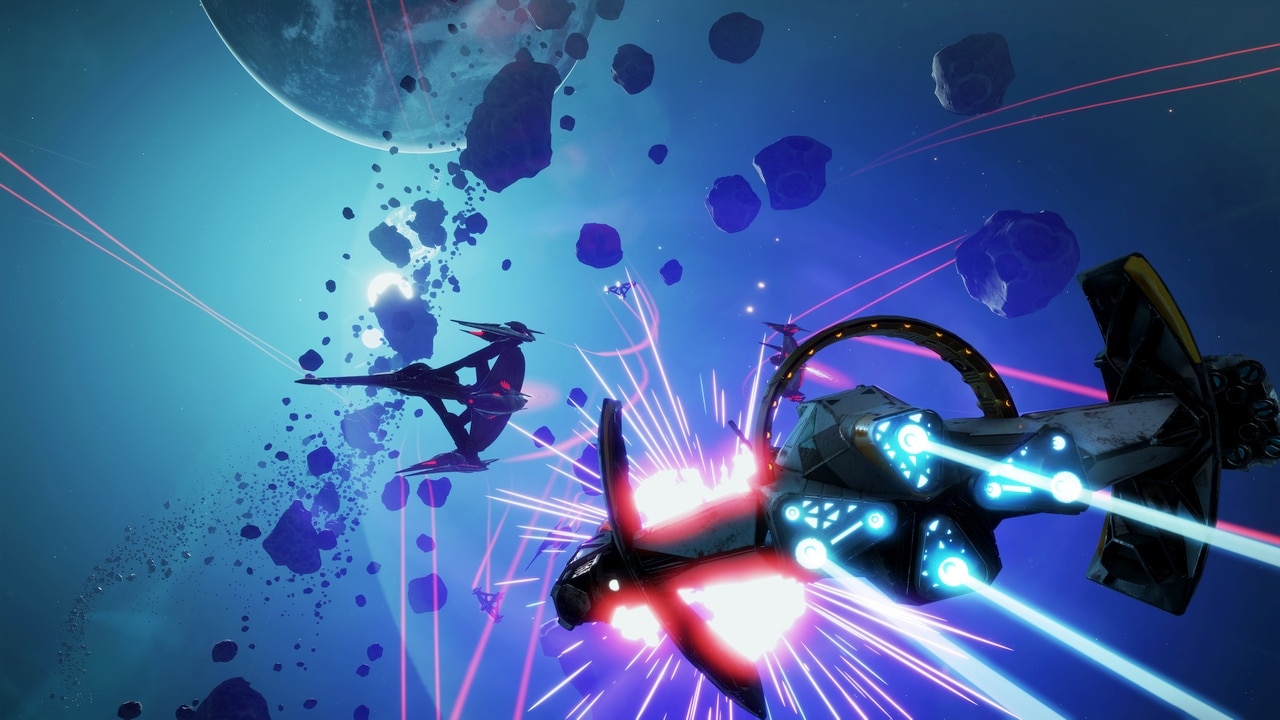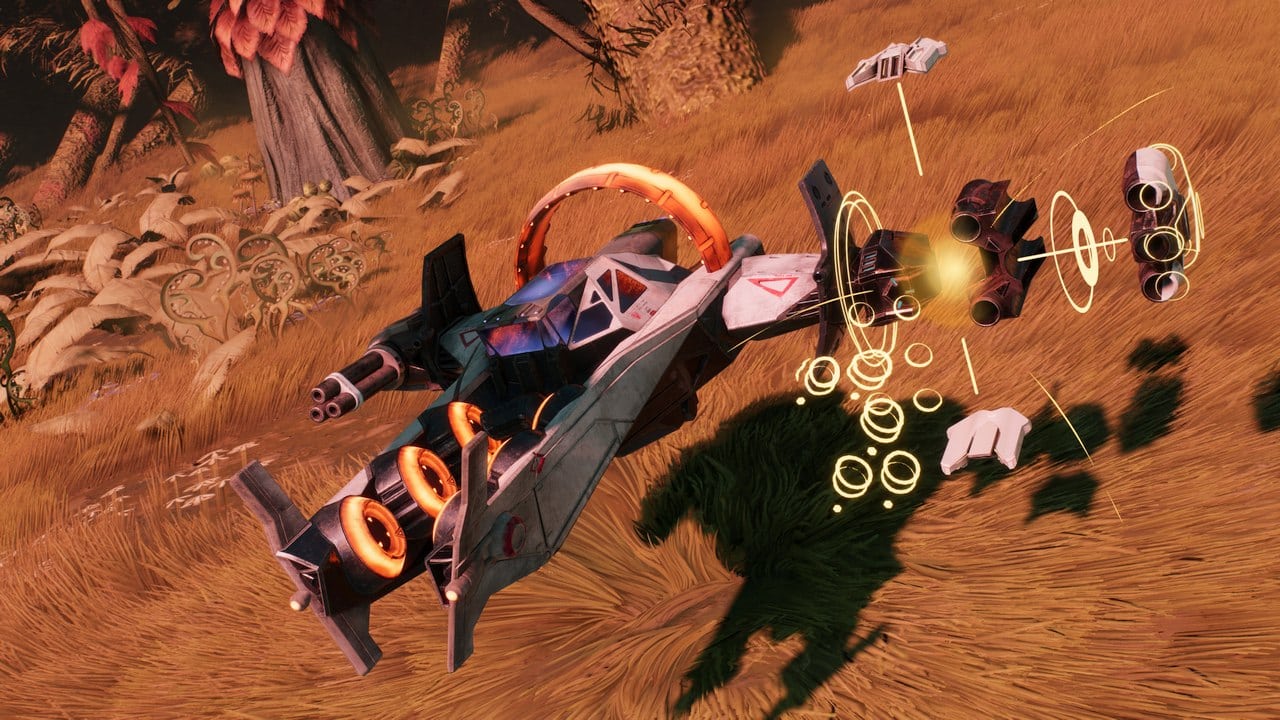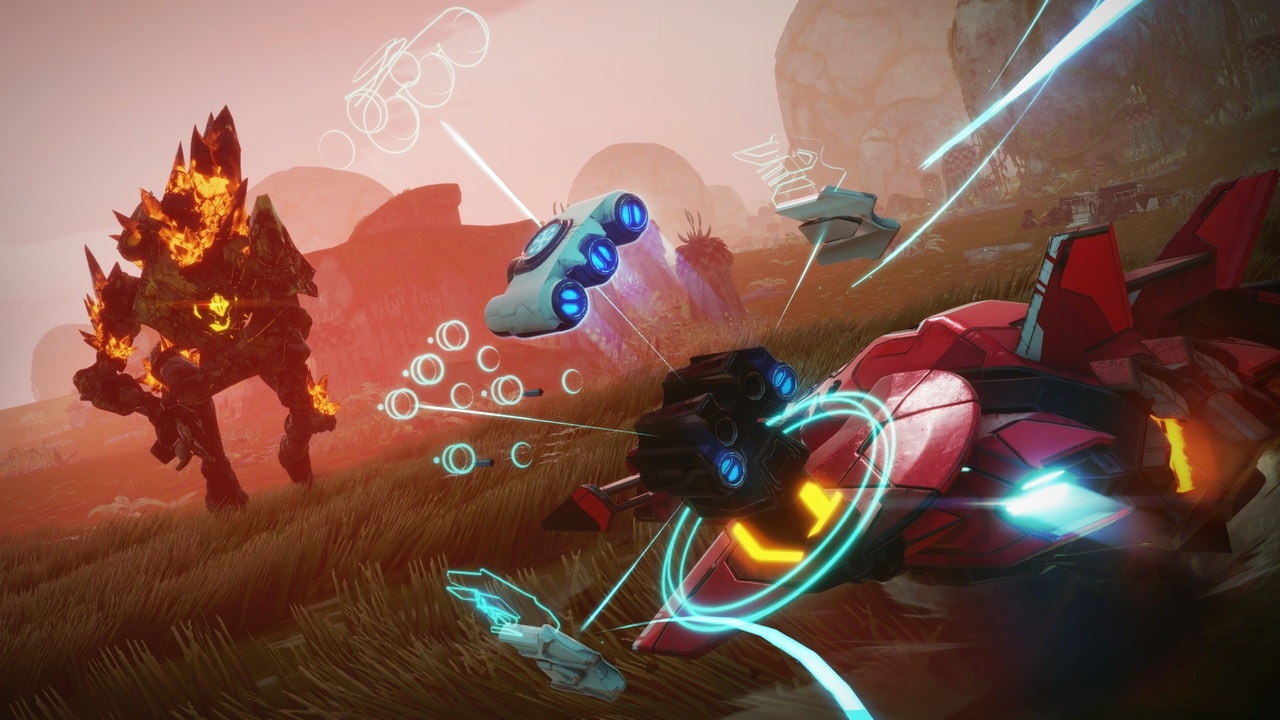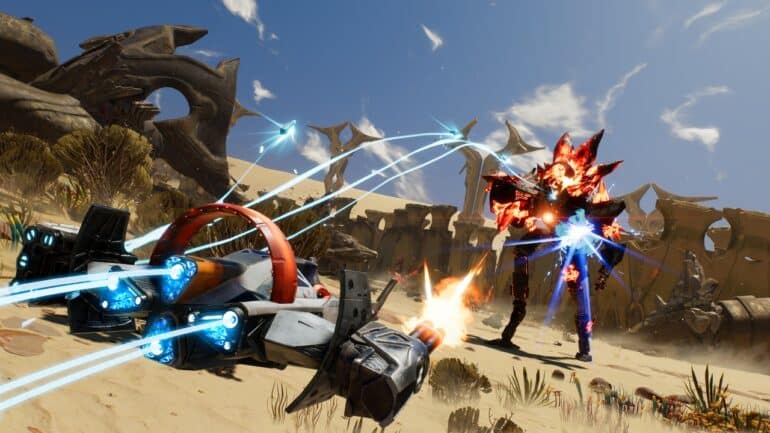
Although the game does have a story to tell, it feels more like an afterthought. It tries to pull you in at the beginning by showing the player a bunch characters with their own unique and quirky personalities. The problem is that right from the get-go, the story is forcing you to care about them. This doesn’t help the fact that both the characters and the plot are as generic as it gets. There’s a crew of interstellar explorers, a bad guy who kidnaps one of the more important members, and a chase to rescue the said comrade and stop whatever the villain intends on doing that could disrupt the universe. This doesn’t help that the crewmates feel very stereotypical-ish. You have the wise and elderly scientist, the naive yet good looking main character, the edgy space alien ally and so on. There is a semblance of development, but you could honestly care less about what happens to them. I will appreciate that there was at least some effort put into the story.
But that’s not exactly the main focus of the game as it’s the space exploration and ship customization that takes center stage. Before you get to play, you’re asked to build your own space fighter. What’s cool here is that you have so many options to choose from. Nearly everything from the weapons on both of the ship’s wings to even your pilot can be customized! What’s even better is that you can do this at will at any given point in the game. This is actually something that you’ll most likely be doing when certain enemies call of for you to change weapons, pilots, ship hulls, etc.
I do have one major complaint, and that comes in the form of the physical Starlink attachments. If you love collecting toys, then know that the game gives you the option to buy an attachment to the PS4 that allows you to put in and swap ship parts whenever you please. The problem here is that you actually have to buy physical components and snap them on to the device. Although many say that they’re not heavy and are unobtrusive, it’s just weird seeing something like that on the controller. In certain ways, it may even be uncomfortable for some. This is a minor issue as you don’t actually have to buy the attachment, but it still baffles me that it’s an option. It’s clear that Ubisoft just wanted to gain more money by introducing “toys” that people would possibly buy, but I, and possibly others, would rather stick to getting these parts by spending time on the game.

Now, let’s get to the gameplay.
It’s great that the first segment that you end playing is a free-flying space battle. You’ll immediately get the feel of how your ship controls in outer space, how to lock on to targets, maneuvering incoming projectiles and all that. There are the basic functions of holding down the left and right secondary triggers to shoot, controlling the ship’s movement and camera view with the left and right thumbstick respectively and so on.
Although the space flying feels somewhat fluid, it’s the ground controls that are somewhat off.
There will come a point at the beginning where your ship will act as a ground unit due to being damaged to the point of not being able to ascend properly. It’s here where you’ll encounter the issue of getting the feel of how it controls during hover mode. The reason as to why it feels so off is because of the ship’s speed. During space battles or exploration, the ship is fast and agile, exactly how you would expect it to be. But during hover mode, it retains its speed. This can cause you to unintentionally pass by sections that you were meant to explore or collide with anything that could damage your ship. Yes, you can make it move slower by just pressing the direction you want to go ever so slightly, but even the tiniest mishap and you’ll be sending your ship full speed. It doesn’t help that there are certain sections where you have to do platforming in order to gain certain materials or mods for your ship.
Speaking of which, there are a good number of planets to explore and a lot of things to collect. They’re big enough to make you feel small, but not to the point where they just keep going on forever. Every new area will have modification parts that can help you upgrade your starfighter and weapons, as well as materials that will help improve the Equinox—basically your mothership. What’s great is that they’re cleverly hidden throughout the worlds and it’s up to you if you want to find them or not. What’s bad is that getting them can be a pain because of the controls. Once you’ve reached a certain point, you can choose between flight or hover mode no matter where you go. But even so, the ship’s speed can still mess with the handling, making these collectibles a tad more difficult to acquire than they’re supposed to be.

Every planet has its own unique wildlife and seeing as well as learning about them is honestly pretty neat! Some of them look cute, others scary, but the majority look good. It’s actually kind of nice as to how you have to scan them to gain information as it makes you feel like a genuine explorer. Even the way you have to do it can feel immersive as you actually need to do this on a particular species at least three or more times until you can gather the data needed. I know it sounds tedious but it’s not that bad.
If you want to push through to see how the plot ends, then you’ll be required to explore every planet until you reach the end game. No, it’s not like No Man’s Sky because you have an actual goal that was set clear to you from the start. The problem is that progressing through the plot can get really repetitive? How do you do that? By accepting and completing the main story and side quests.
For a while, these are pretty great… for like the first few minutes or hours. After that? It just gets too repetitive. But you’ll want to do all of them if you want to gain experience points. These will be needed in order to level up your pilots. At a certain point, your pilots will gain skill points that will allow you to choose different abilities from their skill trees. Each pilot is unique in terms of what they can learn, so it’s pretty much up to you as to who you want to level up. Not that this is going to be a problem as the game doesn’t offer much of a challenge.
I say this because you have the option to increase or decrease the difficulty at will. All you have to do is go to the options menu and switch to whatever you think you feel like playing. This obviously affects gameplay and you can literally make it harder or easier for yourself. If there are enemies you’re having trouble with? No problem! Just switch to an easier setting, get the levels and parts you need, then go back to the difficulty you want when you think you can handle it. This kind of ruins the game, at least in my case, but you always have the choice to just not touch the difficulty setting until you finish your playthrough.

In terms of both visual and sounds, they’re done well. The art gives off that 3D cartoony nature, something akin to a well-made animated Netflix series. The colors are bright and dark when it needs to be and the sound design is on point. I especially enjoy how the sound is handled during space battle sequences. It sounds like you’re having an actual fight in space and that’s one of the things that you could ever ask for in a game like this.
I recommend giving this game a shot. Minus a few flaws, it can captivate you in certain ways that other space exploration titles have failed to do. And if you’re a fan of plastic toys? Even more of a reason for you to get your hands on Starlink: Battle for Atlas. It’s not the greatest, but it does what it’s supposed to and it does it right.
Disclosure: This review is based on a review code provided by Ubisoft. Read our review policy to know how we go with our game reviews.
